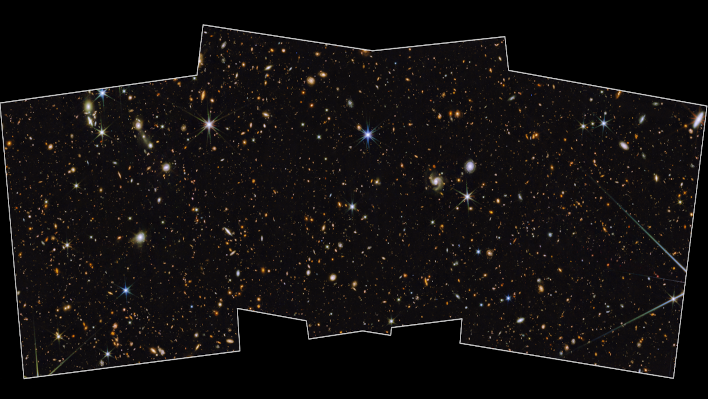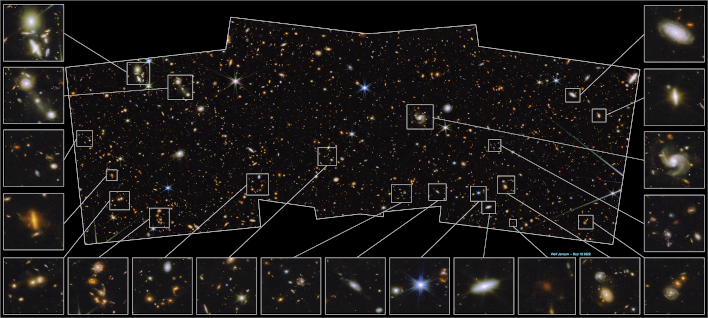NASA's Space Telescope Spots Diamond-Studded Galaxy PEARLS And Astronomers Are Stunned

A relatively narrow slice of the sky, about 2% of the area covered by the full moon, was captured by the NASA Webb Telescope's Near-Infrared Camera (NIRCam) in eight filters, along with Hubble's Advanced Camera for Surveys (ACS) and Wide-Field Camera 3 (WFC3) in three filters. While the image only covers a portion of the PEARLS field, thousands of galaxies over a massive range in distance and time can be seen in incredible detail, many for the first time ever.
The term "medium-deep" refers to the faintest objects that can be viewed in the image above. "Wide-field" refers to the total area that will be covered by the PEARLS program, or about one-twelfth of the area of the full moon. The alluring image unveils a slice of the universe that is "full of galaxies to the furthest reaches, many of which were previously unseen by Hubble or the largest ground-based telescopes."
"For over two decades, I've worked with the large international team of scientists to prepare our Webb science program," remarked Rogier Windhhurst, Regents Professor at Arizona State University and PEARLS principal investigator. "Webb's images are truly phenomenal, really beyond my wildest dreams. They allow me to measure the number density of galaxies shining to very faint infrared limits and the total amount of light they produce."
Jake Summers, a research assistant at Arizona State University, indicated that the image far exceeded what the team expected from his simulations in the months ahead of the first observations. He and the team were excited to see many objects they never thought they would view, "including individual globular clusters around distant elliptical galaxies, knots of star formation within spiral galaxies, and thousands of faint galaxies in the background."
The unique view will be able to be observed 365 days per year, according to Rogier Windhurst, "so its time-domain legacy, area covered, and depth reached can only get better with time."


